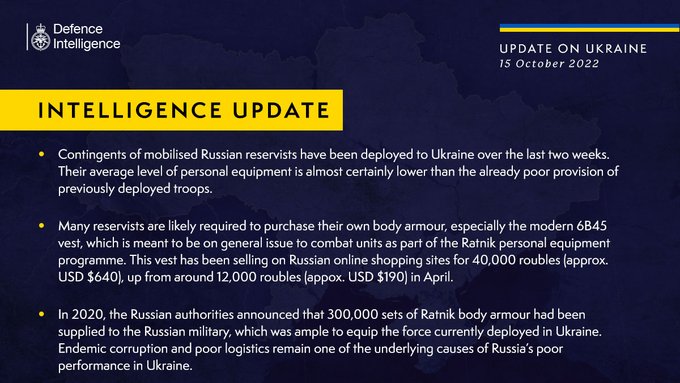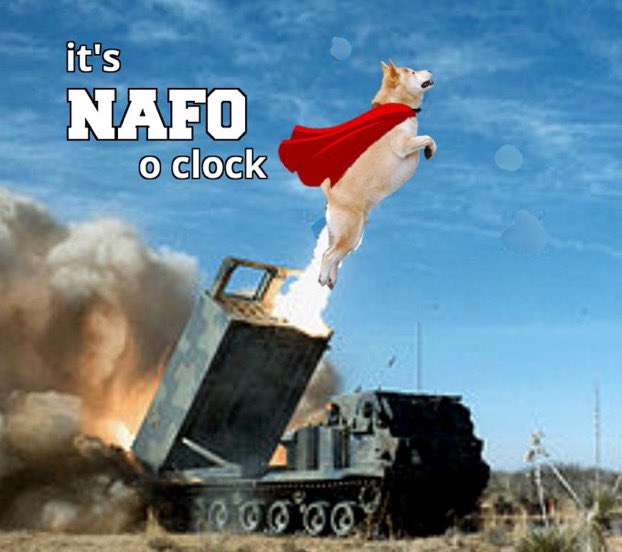Disinformation spreads as combat continues, and Putin hints at a ceasefire if only to resupply and refit troops for the next offensive.

American and Western officials have refused to release specific estimates of how many precision-guided missiles Russia was believed to have at the start of the war. But even before this week’s airstrikes, a senior Ukrainian intelligence official, Vadym Skibitsky, said that Russia had depleted about 65 percent of its missile stockpile, and likely had only about 20 percent left of its supply of Iskander ballistic missiles that have been one of Moscow’s weapons of choice.
Max Bergmann, (a former American diplomat and expert on European and Russian security at the Center for Strategic and International Studies in Washington,) said Russia will almost certainly manufacture more missiles to replenish its supply, but American sanctions have limited imports of microchips and other parts needed in production. Moscow may also turn to its allies for arms.
“No matter what, we have to assume that Russia will still have the capacity to hit deep inside Ukraine,” Mr. Bergmann said.
[...]
The upshot: missile barrages from afar might remain a key part of Russia’s strategy — for as long as they are available.
So then what kinds of air defenses does Ukraine need?
In an interview last month with RBK-Ukraina, a Ukrainian news outlet, Mr. Ignat explained that Ukrainian air defenses are capable of destroying missiles traveling at up to 560 miles per hour, below the speed of sound. Cruise missiles often operate below that threshold, but modern ones can accelerate to supersonic speed for part of their flight path.
Any missile that moves much faster or flies very high — like ballistic missiles — is far harder to hit, Mr. Ignat said. Ukraine has tried to replenish its stocks of older air-defense systems like the S-300 rockets from former Soviet allies, but the supply is limited.
“That is why we need to have the modern complexes that our Western partners will soon provide,” he said. “The manufacturers tell us that these complexes can even hit Iskanders.”
President Volodymyr Zelensky of Ukraine has repeatedly asked for the American-made Patriot missile system, which can shoot down ballistic missiles and supersonic aircraft, and has a relatively long range and can reach high altitudes.
But so far the United States has not agreed to send Patriot systems to Ukraine, because the current stockpile is already being used to deter other threats — not only from Russia but also China, North Korea and Iran.
Additionally, Ukrainian forces would need to be trained to use them, and more air defenses means more people to crew them, far from the front lines. In a resource-intensive war, defending critical infrastructure and cities begins to become its own front, especially if Russia continues these types of attacks.
www.nytimes.com/...

…War is a form of politics, and the Russian regime is altered by defeat. As Ukraine continues to win battles, one reversal is accompanied by another: the televisual yields to the real, and the Ukrainian campaign yields to a struggle for power in Russia. In such a struggle, it makes no sense to have armed allies far away in Ukraine who might be more usefully deployed in Russia: not necessarily in an armed conflict, although this cannot be ruled out entirely, but to deter others and protect oneself. For all of the actors concerned, it might be bad to lose in Ukraine, but it is worse to lose in Russia.
The logic of the situation favors he who realizes this most quickly, and is able to control and redeploy. Once the cascade begins, it quickly makes no sense for anyone to have any Russian forces in Ukraine at all. Again, from this it does not necessarily follow that there will be armed clashes in Russia: it is just that, as the instability created by the war in Ukraine comes home, Russian leaders who wish to gain from that instability, or protect themselves from it, will want their power centers close to Moscow. And this, of course, would be a very good thing, for Ukraine and for the world.
If this is what is coming, Putin will need no excuse to pull out from Ukraine, since he will be doing so for his own political survival. For all of his personal attachment to his odd ideas about Ukraine, I take it that he is more attached to power. If the scenario I describe here unfolds, we don't have to worry about the kinds of things we tend to worry about, like how Putin is feeling about the war, and whether Russians will be upset about losing. During an internal struggle for power in Russia, Putin and other Russians will have other things on their minds, and the war will give way to those more pressing concerns. Sometimes you change the subject, and sometimes the subject changes you.
Of course, all of this remains very hard to predict, especially at any level of detail. Other outcomes are entirely possible. But the line of development I discuss here is not only far better, but also far more likely, than the doomsday scenarios we fear. It is thus worth considering, and worth preparing for.
snyder.substack.com/...





After almost eight months, the war in Ukraine hangs in the balance. Ukrainian counter-offensives continue to make progress, while Russian forces are still pressing elsewhere.
But on the internet, it's a very one-sided affair.
"This is a meme nation," says Olena, a Kyiv entrepreneur who manages teams of social media volunteers.
"If this was a war of memes, we would be winning."
Olena is not her real name. Due to the sensitive nature of the work she and her teams carry out on behalf of Ukraine's defence ministry, she has asked to remain anonymous.
Her teams work round-the-clock, reacting within hours to news from around the country, producing punchy videos, often set to music, for the ministry's audiences at home and abroad.
Just as Ukraine's President Volodymyr Zelensky tailors speeches to foreign parliaments to take account of local history, culture and sensibility, so Olena's five-strong international team target their messages.
A June video thanking Britain for its military assistance featured the music of Gustav Holst and The Clash, with glimpses of Shakespeare, David Bowie, Lewis Hamilton and a montage of British-supplied anti-tank weapons in action.
www.bbc.com/...

WARSAW — When huge street protests swept across Belarus two years ago after a fraud-tainted election, the Eastern European nation’s strongman leader, Aleksandr G. Lukashenko, was propped up by the Kremlin, which sent security officers and money to support him.
Today, eight months after Russia invaded Ukraine, Mr. Lukashenko’s Russian-enabled grip on power risks slipping as Moscow pressures him to get more involved in the faltering military campaign next door in Ukraine.
Russia started its invasion of Ukraine in February with an abortive thrust toward Kyiv, the Ukrainian capital, from Belarusian territory. With his forces now largely bogged down or in retreat, President Vladimir V. Putin of Russia is looking to Mr. Lukashenko for more robust support.
After a meeting with Mr. Putin in St. Petersburg last weekend, Mr. Lukashenko on Monday told military and security officials that Ukraine, Poland and NATO were “trying to drag us into a fight.”
“We must not let them drag us into a war,” he added.
His remarks, though aimed at NATO, revealed a deep unease with what Western and Ukrainian officials believe is increasing Russian pressure to send Belarusian forces to fight.
Artyom Shraibman, a Belarusian political analyst who fled to Poland after a brutal crackdown on postelection protests in 2020, cautioned that it was unclear exactly what Mr. Putin had asked of the Belarusian leader in St. Petersburg, but, he added, “it is very clear that Lukashenko is not yet willing to join the war” because of the immense political risks that would bring.
[...]
In what many analysts interpreted as a desperate effort to keep cut-price oil and other aid from Russia flowing while avoiding direct involvement in Ukraine, Mr. Lukashenko announced on Monday that he would let Russian troops return to Belarus in large numbers and form a joint force as a bulwark to NATO. The Belarusian Defense Ministry said on Friday that Russian troops would arrive in coming days to join this new joint force.
In response, Ukraine’s president, Volodymyr Zelensky, on Tuesday asked leaders of the Group of 7 nations to send observers to his country’s nearly 700-mile border with Belarus, warning that “Russia is trying to directly involve Belarus in this war.”
But as of early this week, the Ukrainian general staff said it had seen “no signs” that Mr. Lukashenko’s army was gearing up for an attack.
www.nytimes.com/...


Key points (SkyNews)


 2019
2019


